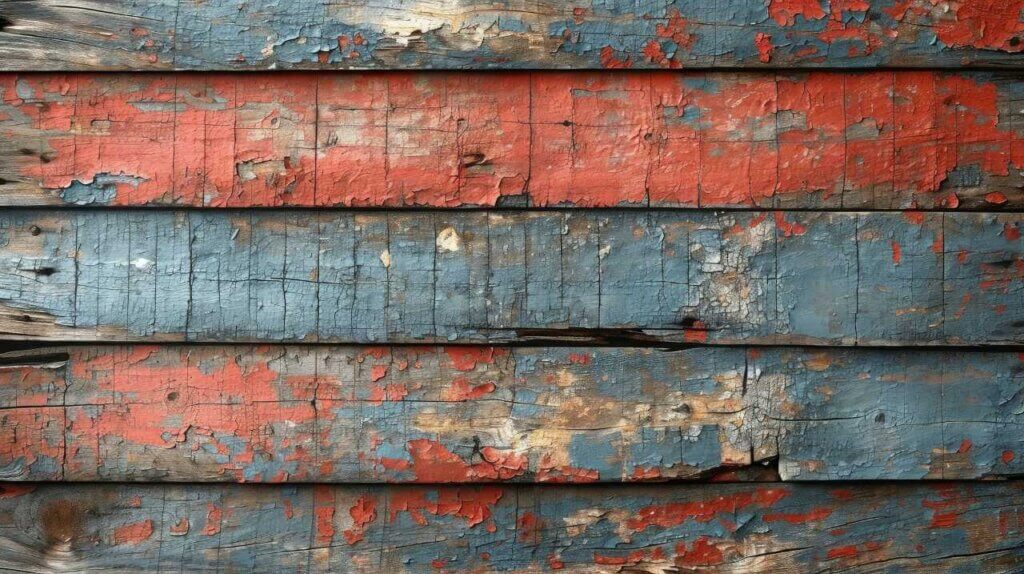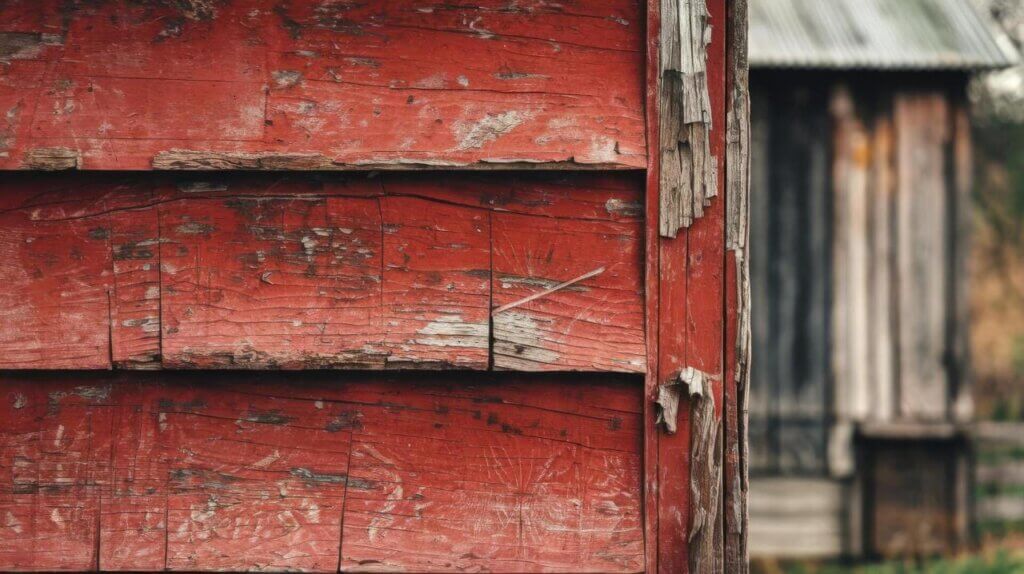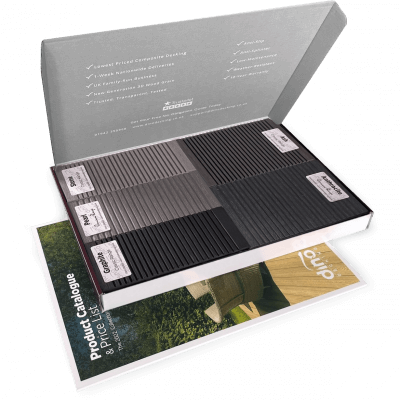5 Composite Decking Lighting Ideas
Our composite decking looks great in any setting, but you can really make your outdoor spaces shine with our decking
Products in Stock
Lowest Prices
Express Delivery
10-Year Warranty
Bank Holiday Weekend Sale. Up To 15% Off.

Your home’s cladding isn’t just about curb appeal—it’s your property’s first line of defense against the elements. Like anything that stands between you and the wild British weather, cladding eventually takes a beating. But how do you know when a simple repair won’t cut it anymore? When is it time to bite the bullet and replace the whole system?
If you’ve been eyeing your cladding with suspicion lately, here are the telltale signs that it might be time for a fresh start.
Nothing screams “replace me” quite like cladding that’s visibly falling apart. While minor issues can often be repaired, extensive damage typically means it’s time for a complete overhaul.
When your cladding starts to resemble a funhouse mirror with warped, bulging, or cracked panels, you’re looking at serious trouble. These deformities aren’t just unsightly—they’re open invitations for moisture to penetrate your home’s structure.
Vinyl cladding particularly suffers in extreme temperatures, warping in intense heat or becoming brittle and cracking in freezing conditions. If more than 20% of your panels show these signs, replacement is usually more cost-effective than spot repairs.
Wood cladding that’s splitting or showing deep cracks beyond the surface paint layer is telling you it’s reached the end of its serviceable life. Those cracks will only worsen with time, allowing water to seep in and cause more extensive damage.
While a bit of fading might seem purely cosmetic, significant discolouration often indicates material breakdown. UV radiation gradually breaks down the molecular structure of many cladding materials, especially vinyl and some composites.
Stubborn stains that cleaning won’t budge could be signs of chemical damage or biological growth that’s penetrated the material. Dark streaks running down from joints typically indicate water damage that’s already working its way behind your cladding.
Uneven colouration—where some areas appear dramatically different from others—suggests inconsistent weathering and potentially compromised sections that may be failing faster than others.
Water is cladding’s arch-nemesis. If you’re noticing signs of moisture problems, your cladding is likely failing at its primary job.
Spots that never seem to dry out or areas where moss, algae, or mold consistently return despite cleaning are red flags. While some biological growth is normal in damp climates, persistent problems indicate your cladding is either trapping moisture or allowing it to penetrate.
Musty smells around exterior walls or inside your home near external walls suggest moisture has already made its way through. If left unchecked, this can lead to serious structural issues and health hazards from mold.
Interior wall damage—peeling wallpaper, bubbling paint, or damp patches—often traces back to failing exterior cladding that’s allowing water infiltration.
Painted wooden cladding requires regular maintenance, but if you’re finding yourself repainting every year or two instead of every 5-7 years, your cladding may be deteriorating beneath the paint.
Soft, spongy areas in wooden cladding are clear signs of rot. Poke suspicious sections with a screwdriver—if it easily penetrates the wood, you’re dealing with rot that’s beyond surface-level repair. Once rot sets in, it tends to spread, and replacement becomes inevitable.
Bubbling or peeling paint, particularly around joints and seams, indicates moisture is getting behind the paint layer. This is often the first visible sign of cladding failure before more serious damage becomes apparent.
Your cladding plays a significant role in your home’s thermal envelope. When it’s failing, your energy bills will tell the tale.
If you’ve noticed steadily climbing heating costs despite no significant change in energy prices or usage habits, your cladding might be the culprit. Deteriorating cladding often leads to thermal bridges—areas where heat escapes more readily.
Cold spots on interior walls during winter or rooms that never seem to maintain a comfortable temperature can indicate compromised cladding. Similarly, if you’re feeling drafts near exterior walls even when windows are sealed, your cladding system may have deteriorated to the point where it’s affecting your home’s weather seal.
Modern cladding systems offer significantly better insulation than older installations. Upgrading to new materials can dramatically improve your home’s energy efficiency while addressing the underlying problems, helping you learn how to make cladding last longer with current technologies.
When your cladding starts physically separating from your home, it’s a clear distress signal that shouldn’t be ignored.
Loose panels create a domino effect—once one section fails, adjacent areas face increased stress and often follow suit. If you’re finding panels on the ground after storms or noticing sections that rattle in the wind, you’re looking at a system in failure mode.
Gaps between panels that weren’t part of the original design indicate shifting or shrinkage of materials. These gaps allow water penetration and further accelerate deterioration of both the cladding and the underlying structure.
Nail heads popping out or visible fasteners that previously weren’t exposed suggest your cladding is contracting, expanding, or warping beyond its designed tolerances. This often happens near the end of a cladding system’s lifespan.
Metal cladding is durable, but nothing lasts forever. Rust spots, particularly around fasteners or panel edges, indicate the protective coating has failed. Once corrosion begins, it typically spreads beneath the surface coating, weakening the entire panel.
White, powdery residue on aluminum cladding suggests oxidation that’s compromising the material’s integrity. Similarly, copper cladding should develop a consistent patina—uneven colouration or flaking suggests problems with the material.
Scratches or dents that expose bare metal will inevitably lead to corrosion issues. If your metal cladding has numerous such areas, especially in regions regularly exposed to moisture, replacement is often more practical than trying to repair each compromised section.

Sometimes, the issue isn’t structural integrity but simple aesthetics. If your home’s exterior looks like it’s stuck in a time warp, new cladding can dramatically transform your property’s appearance and value.
Dated styles can significantly impact your property’s market value. Estate agents often cite exterior appearance as a major factor in buyer first impressions. If your cladding screams “1970s renovation nightmare,” an update might be a wise investment before selling.
Inconsistent repairs over the years often result in a patchwork appearance that no amount of painting can unify. In these cases, starting fresh with a complete replacement provides a cohesive look while addressing any hidden issues.
Modern cladding options like our eco-friendly alternatives to siding offer improved aesthetics along with better performance. We at Dino Decking use composite materials to provide the look of traditional wood without the maintenance headaches, giving you the best of both worlds.
Recent building regulations have placed increased emphasis on cladding fire safety, particularly for multi-story buildings. If your cladding doesn’t meet current standards, replacement isn’t just advisable—it might be legally required.
Flammable cladding materials have been implicated in several tragic fires. If you’re unsure about your cladding’s fire rating, particularly if you own a flat or apartment, consulting a professional assessment is essential.
Insurance companies are increasingly attentive to cladding materials when calculating premiums. Updating to fire-resistant options might reduce your insurance costs while providing peace of mind.
Not every cladding issue demands a complete replacement. Here’s how to decide whether repair or replacement makes more sense for your situation:
Consider replacement when:
Repairs might suffice when:
A professional assessment can help you determine the most cost-effective approach. Sometimes what looks like a minor issue to the untrained eye can indicate more serious underlying problems.
Your home’s cladding works tirelessly to protect your property from the elements. When it starts showing these warning signs, taking prompt action can prevent more extensive damage to your home’s structure.
Modern cladding options offer improved durability, better insulation, enhanced fire safety, and reduced maintenance requirements. If you’re facing substantial repairs to aging cladding, upgrading to newer materials often proves more economical in the long run.
Remember that cladding isn’t just about protection—it’s also your home’s face to the world. Choosing the right replacement system balances practical considerations with aesthetic appeal, potentially increasing your property’s value while reducing ongoing maintenance costs.

Our sample pack contains a sample piece of each colour currently available. Order your free sample pack today to compare the colours and get a true feeling of the Dino Decking range!
Our composite decking looks great in any setting, but you can really make your outdoor spaces shine with our decking
If the idea of having rats under your decking makes you shiver, don’t worry. We’ll let you know the signs
Business hours
Monday: 09:00 – 17:30
Tuesday: 09:00 – 17:30
Wednesday: 09:00 – 17:30
Thursday: 09:00 – 17:30
Friday: 09:00 – 17:30
Saturday: Closed
Sunday: Closed
Contact us
01942 355968
support@dino.co.uk
Collection Address: Unit 1 Wetheral Close Hindley Ind Estate Wigan Greater Manchester North West WN2 4HS
Pages
Products
Testing
Copyright 2025 Dino Decking Ltd All Rights Reserved.
VAT Number: GB296097848.
Company Number: 10837233.